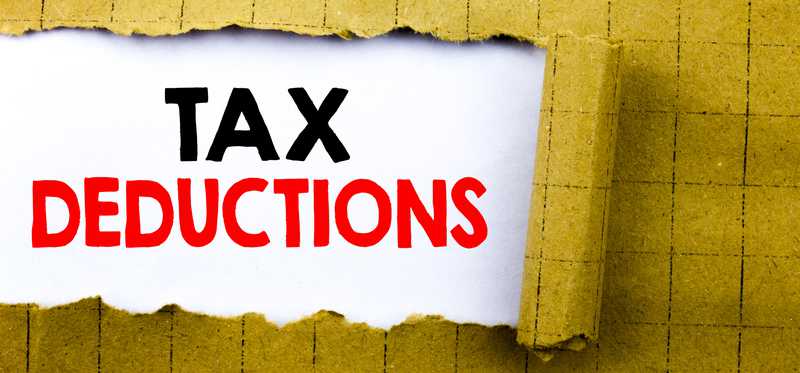15 Steps to Take if You're Behind Saving for Retirement

15 Steps to Take if You're Behind Saving for Retirement
A secure retirement is still within reach -- even if you're behind on saving
If you feel like you're behind on retirement savings, that can be a scary place to be. After all, you'll want to make sure you aren't setting yourself up for a lifetime of worry in your later years.
The good news is, most people who are behind can get back on track with a few simple changes.
In fact, if you take these 15 steps, you should hopefully still be able to set your goals and retire with the money you need to enjoy life after leaving the workforce.
5 Winning Stocks Under $49
We hear it over and over from investors, “I wish I had bought Amazon or Netflix when they were first recommended by the Motley Fool. I’d be sitting on a gold mine!” And it’s true. And while Amazon and Netflix have had a good run, we think these 5 other stocks are screaming buys. And you can buy them now for less than $49 a share! Simply click here to learn how to get your copy of “5 Growth Stocks Under $49” for FREE for a limited time only.
Previous
Next

1. Take stock of your situation
The first step if you feel like you're behind on retirement savings is to assess where you are.
That means considering the different sources of retirement income you'll have, including pension benefits, Social Security, and money from your savings.
You can sign into your online Social Security account to get a good idea of how much your retirement benefits will be. You can also check with your employer about any pension benefits and review your account statements (if any) to see what money you have in savings.
Previous
Next

2. Decide on your target retirement date
You'll need to get an idea of when you plan to retire in order to determine if you'll be on track to leaving the workforce as planned. So take some time to think about your desired retirement age and life plan.
When you consider your preferred retirement age, remember that an earlier target could make it even harder for you to catch up. Retiring early could also mean claiming Social Security early, which could reduce these benefits and leave you more reliant on your savings.
ALSO READ: Claiming Social Security at 62? 3 Things You Need to Know
Previous
Next

3. Set a retirement savings goal
It's impossible to know how behind you are unless you know what goal you're trying to reach. So estimate what amount you hope to have invested by the time you reach your desired retirement age.
There are several different approaches to setting a retirement goal, but if you want to keep things simple, just figure out your final salary you'll be earning before retiring and assume you'll need 10 times that amount saved.
To estimate your final salary, assume you'll get a 2% raise for each remaining year of work.
Previous
Next

4. Decide how much to save each month
Once you've figured out you need a certain amount of money -- such as $500,000 or $1 million -- you need to figure out how to get from here to there. So if want to retire in 10 years, your current savings amount is $100,000 and you need $500,000, then you'll have to save $400,000 in a decade.
You can use a retirement savings calculator to estimate how much you'll need to put aside each month to reach your target goal. In the above example, you'd need to add around $1,829 per month to your current $100,000 nest egg to be on track to retire.
Previous
Next

5. Take a close look at your budget
Next, it's time to try to work your desired savings amount into your budget. If you don't already have a budget, that means you'll need to make one.
If you've already got this financial document, take a careful look at it and see where your money is going, how much of it you have to spare, and whether you can invest your target amount by making spending cuts in other areas.
5 Winning Stocks Under $49
We hear it over and over from investors, “I wish I had bought Amazon or Netflix when they were first recommended by the Motley Fool. I’d be sitting on a gold mine!” And it’s true. And while Amazon and Netflix have had a good run, we think these 5 other stocks are screaming buys. And you can buy them now for less than $49 a share! Simply click here to learn how to get your copy of “5 Growth Stocks Under $49” for FREE for a limited time only.
Previous
Next

6. Consider big spending changes
Sometimes it's really hard to make tons of cuts to your budget and sustain them over the length of time it takes to build a retirement nest egg.
Making one or two big changes could be a lot easier.
For example, if you can switch to a cheaper used car and cut your monthly payment in half, you could easily divert all the money you're saving on car payments right to retirement -- and you only have to make that change one time.
Previous
Next

7. Increase your income
If you're way behind on retirement savings, you may not be able to hit your goals just by spending cuts alone. If that's the case, you may have to look into earning more money.
If you can advance in your career and earn a higher salary by getting a promotion or switching jobs, you could put all of your extra earnings into your retirement account to make it easier to catch up when you're behind.
You could also consider a part-time job that you do solely to make money for retirement savings so you can get back on track to achieving your goals.
Previous
Next

8. Make sure you're using the right retirement savings accounts
There are many different tax-advantaged savings accounts including traditional 401(k) and IRA accounts, as well as Roth 401(k) and Roth IRA accounts.
If you have a qualifying high-deductible health insurance plan, you may also be able to contribute to a health savings account (HSA), which can be used as an additional tax-advantaged retirement savings account.
Research each of these different options to find which one offers you the best tax breaks, lowest fees, and best opportunities to invest the way you want to.
Previous
Next

9. Take full advantage of your employer match
If you are behind on retirement savings, you can't afford to pass up free money. That's why it's crucial you invest enough in your 401(k) to earn your full employer match if your company offers one.
Find out how matching contributions work and ensure you are contributing the required amount to get all of the money your employer is willing to provide to help you save for your future.
ALSO READ: No 401(k) Match? 5 More Creative Ways to Save for Retirement
Previous
Next

10. Claim as many tax breaks as you can
The government can help you catch up on your retirement accounts because of the generous tax breaks that are provided to retirement savers.
In addition to having the option to deduct your contributions to a traditional 401(k), IRA, or HSA, you may also be eligible for the saver's credit. This could provide you up to $2,000 in free retirement money because you can get a tax credit equaling up to 50% of your contributions.
However, you will need to qualify for this credit based on your income and contributions you make, so be sure you understand the rules.
5 Winning Stocks Under $49
We hear it over and over from investors, “I wish I had bought Amazon or Netflix when they were first recommended by the Motley Fool. I’d be sitting on a gold mine!” And it’s true. And while Amazon and Netflix have had a good run, we think these 5 other stocks are screaming buys. And you can buy them now for less than $49 a share! Simply click here to learn how to get your copy of “5 Growth Stocks Under $49” for FREE for a limited time only.
Previous
Next

11. Take advantage of catch-up contributions
Catch-up contributions are available for certain retirement savings accounts. Typically, you can make catch-up contributions after you've turned 50 years old.
Catch-up contributions allow you to make extra tax-deductible contributions to your account. For example, in 2021, older workers can make an extra $6,500 in tax-deductible contributions to their 401(k), on top of the $19,500 in contributions all workers are allowed.
When you need to catch up because you are behind on retirement savings, catch-up contributions can make that a whole lot easier.
Previous
Next

12. Automate your savings
If you make the process of saving for retirement automatic, it's a lot easier to meet your target goal every month -- and thus it's a lot easier to get back on track and stay there.
You can sign up for 401(k) contributions to be withdrawn from your paycheck. But even people without a 401(k) can automate the process of transferring money to their IRA or other retirement accounts on payday.
Previous
Next

13. Save your windfalls
One of the best ways to deal with being behind on retirement savings is to put any and all "found" money into your retirement accounts. This means if you get money you haven't committed to something else, you should invest it for your future.
Whether it's birthday money, a tax refund, a stimulus check, or money you saved on groceries because you used a great coupon, put any windfalls into retirement savings immediately.
Previous
Next

14. Choose the right investment mix
It's especially crucial you have a solid investment portfolio if you worry you haven't saved enough for retirement. This means you need to take the right level of risk that gives you the best chance to earn reasonable returns without losing the money you have.
Developing an individualized asset allocation that takes your unique risk tolerance into account is usually the best move when you've fallen behind on saving because some of the standard approaches -- such as investing in a target date fund -- may be more conservative than you can afford given the fact your nest egg is a little smaller than it should be.
Previous
Next

15. Consider a later retirement
Sometimes, it's just too hard to get caught up and save enough for retirement by your preferred date. If that's the case, then you may need to adjust your expectations and plan to work for longer -- at least part time.
Staying in the workforce for a few extra years could enable you to supercharge your savings, earn delayed retirement credits that boost your Social Security benefits, and generally have a much more financially secure life as a senior.
5 Winning Stocks Under $49
We hear it over and over from investors, “I wish I had bought Amazon or Netflix when they were first recommended by the Motley Fool. I’d be sitting on a gold mine!” And it’s true. And while Amazon and Netflix have had a good run, we think these 5 other stocks are screaming buys. And you can buy them now for less than $49 a share! Simply click here to learn how to get your copy of “5 Growth Stocks Under $49” for FREE for a limited time only.
Previous
Next

Don't give up on your retirement dreams
Don't give up on your dreams for a secure retirement even if you are behind where you'd like to be. Most everyone has time to change course, especially if you commit to modifying your habits so you can up the amount you're saving.
While it will take some extra work and effort, you can create the retirement you deserve.
The Motley Fool has a disclosure policy.
Previous
Next
Invest Smarter with The Motley Fool
Join Over Half a Million Premium Members Receiving…
- New Stock Picks Each Month
- Detailed Analysis of Companies
- Model Portfolios
- Live Streaming During Market Hours
- And Much More
READ MORE
HOW THE MOTLEY FOOL CAN HELP YOU
-
Premium Investing Guidance
Market beating stocks from our award-winning service
-
The Daily Upside Newsletter
Investment news and high-quality insights delivered straight to your inbox
-
Get Started Investing
You can do it. Successful investing in just a few steps
-
Win at Retirement
Secrets and strategies for the post-work life you want.
-
Find a Broker
Find the right brokerage account for you.
-
Listen to our Podcasts
Hear our experts take on stocks, the market, and how to invest.
Premium Investing Services
Invest better with The Motley Fool. Get stock recommendations, portfolio guidance, and more from The Motley Fool's premium services.